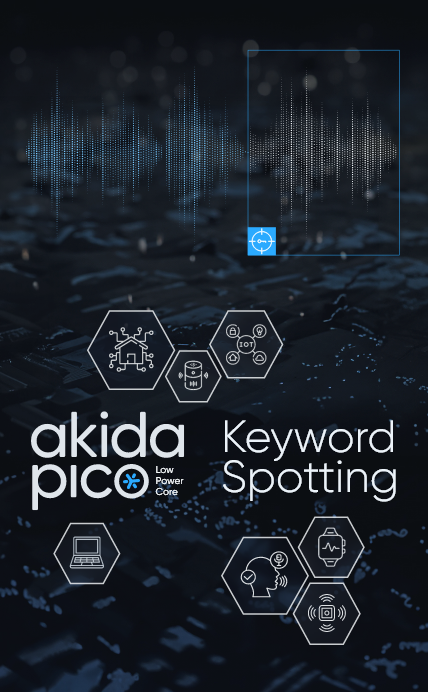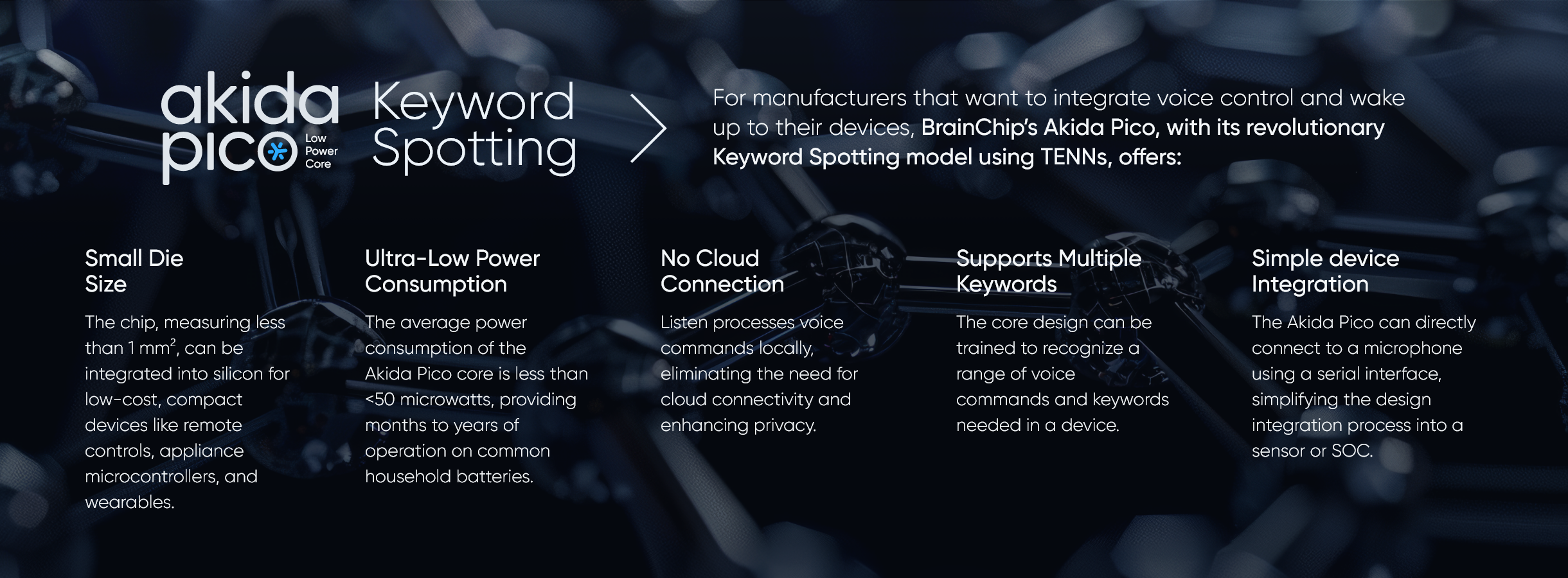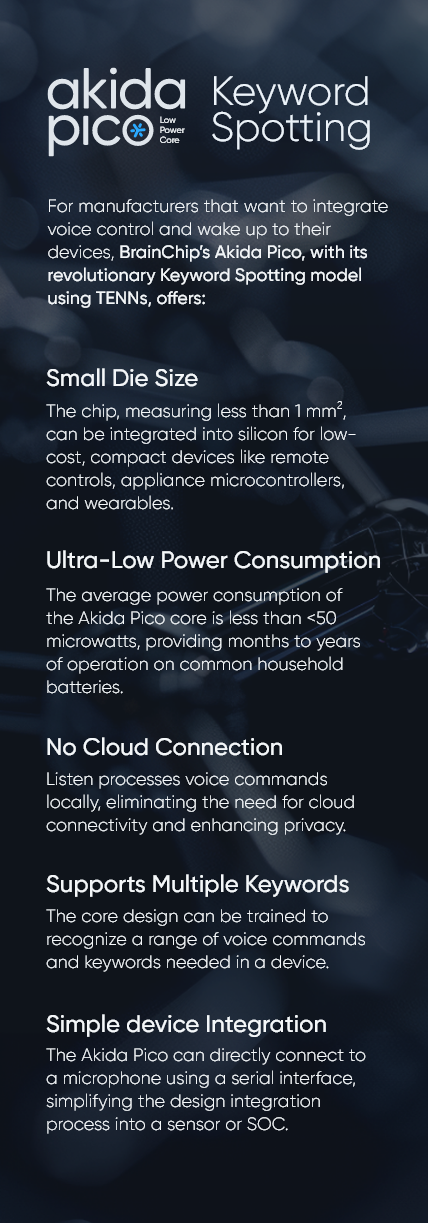

Welcome to the Keyword Spotting Revolution: Where Intelligent Voice Interaction meets Real-World
Applications
Smart devices, wearables and even consumer appliances are becoming increasingly dependant on voice interaction, yet technology solutions are challenged with efficiently controlling the energy required to support these very specific interactions within the devices.
How to Determine when Device
interaction is Needed
Identify Keywords to match
Your promo text goes here. You can edit it using Frontend Builder.
Are they recognized?
Your promo text goes here. You can edit it using Frontend Builder.
Device interacts and listens.
Your promo text goes here. You can edit it using Frontend Builder.
If the keywords are not recognized, the device does not attempt
to process any data, which elongates battery life and provides
an additional layer of user privacy.
This is Keyword Spotting (KWS)
Devices detect specific wake words and phrases
and interact only when there is a match.

- Reduces User Latency
- Ensures Privacy
- Improves Power Efficiency
- Significantly Reduces
the Cost Of Ownership
This technology powers the functionality behind familiar voice-activated systems, making them responsive and user-friendly. However, as devices evolve and user expectations grow, Keyword Spotting is now occurring locally on devices, without cloud connectivity.
You no longer need to be a large cloud provider to offer a “hello” and wake up service for devices.
Why Keyword Spotting?
Keyword Spotting is a technology that listens for specific words or phrases in an audio stream, triggering a response from a device. Once known only for waking up a device service that routes the rest of the voice from your home or smartphone device to a server in the cloud, Keyword Spotting can be deployed locally to interpret a wide set of in context commands, such as “lock the door” or “set the microwave for 1 minute.”
The key is the device’s ability to locally monitor audio input in a low-power state until it detects the specified keyword, allowing the system to save battery or compute power until needed, which is particularly important for devices such as wearables and other IoT devices. Having a small library of key words enables local control of a device without any other interface.
Key Benefits
Lower Cost of Ownership
Local edge processing allows devices to operate without relying on cloud connectivity, reducing operational costs.
Reduced Latency
Responses are nearly instantaneous, providing a natural voice interface, without the need for round trips to the cloud and back.
Enhanced Privacy
Audio data stays on the device, there’s no risk of personal information being eavesdropped on by remote servers.
There are a host of examples of how this can benefit users in scenarios like a vehicle,
where commands like “turn on the lights” or “check for maintenance” offer a better
experience than searching for switches or menus. It enables instant, connection-free
responses, which is crucial for safety.
IoT (Internet of Things) devices, which are low-power solutions for the edge, can be controlled hands-free, potentially eliminating a touch display and visual attention.
Wearables like smartwatches, fitness trackers and medical monitors where the convenience of voice control is a top priority.
Smart home appliances, from lights, thermostats, security cameras, microwaves, laundry, cooking and coffee machines, consumers enjoy the convenience of voice control, but prefer to avoid subscription costs or having their daily activities monitored.
Why Energy Efficiency is Important
Many home devices have high standby power due to displays and microcontrollers constantly scanning for inputs and adding cloud-based voice interactivity would further increase this power consumption. Akida Pico drastically reduces the energy consumed by devices in standby mode, cutting power use from watts to microwatts—a thousand-fold decrease.

This innovation can significantly lower the global power load across billions of devices.


Where is this going in the Future?
Future advancements will feature expanded language support, improved voice recognition, and seamless integration of language processing with edge LLMs, eliminating the need for user guides and maintenance manuals.
Akida is at the forefront of these developments, with Akida Pico setting the bar for efficiency, cost of ownership, ease of integration, and privacy for Keyword Spotting at the edge.
Integrating Voice Wake Up Functionality
into your Next Chip Design
Keyword Spotting enables smarter, more efficient interactions with everyday devices.
Akida Pico, leveraging advanced TENNs state-space neural processing models at the edge, transforms products with an ultra-low-power, private, and easy-to-integrate design for natural voice control. This marks the starting point for the future of voice interaction.

Download the Akida Pico Brochure with KWS support by
filling out the form below.
The Roadmap for Voice Interaction
Learn more about how BrainChip’s Akida Pico can transform your
AI strategy and advance solutions development.
